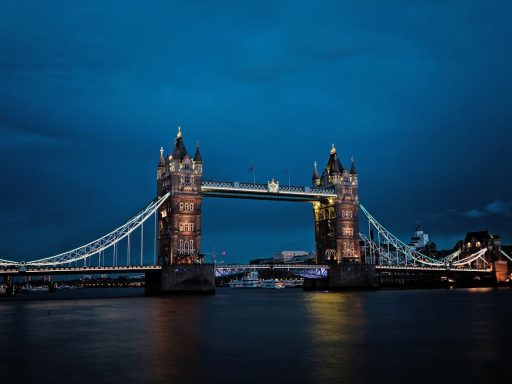If you are yet to set foot on European soil, there are countless reasons why you should begin planning your next adventure around this grand continent. Europe has a little bit of everything, whether you’re looking to solo backpack, travel with friends, as a couple, or as a family.
The continent of Europe is extremely diverse. With a history that dates back many centuries, a hodgepodge of fascinating cultures, gorgeous landscapes, buildings, and monuments, there’s is so much to lap up on a European vacation. And we haven’t even touched on the food!
Check out this European travel guide that highlights the best time of year to travel, how to get around Europe, and the top spots to visit.
When is the Best Time to Travel?
It’s no secret that Europe is one of the world’s top travel destinations. This means that you need to be a little selective in when you travel. Much of the continent is also governed by vast changes in weather, so you’ll have to take seasons into account too.
If you plan on backpacking on a budget, the best time to explore Europe is during the off-season. This falls from November-March and you’ll be able to find cost-effective flights, accommodation, and excursion rates. The only downside is the weather. This period falls during the European autumn/winter, so pack warm! Don’t let the weather deter you though, Europe is still dazzling, even in the cold.
If you want to visit Europe and experience all the buzz and action of summer, the best time is from June-August. Bear in mind that this is peak season and Europe is at its busiest. But this is your best chance to visit a naturist beach and walk around in your birthday suit, European style!
Yes, the weather is sublime, but prices are a little higher for flights, accommodation, excursions, and more.
If you want to avoid the crowds and catch the tail-end of summer, the shoulder seasons are ideal. They fall between September-November and April-May. In most parts of Europe, the weather is still mild, the crowds are departing, and prices tend to stabilize.
European Transport
The European continent is huge. Even though most countries tend to share multiple borders, the expanse of the continent is still vast. But getting around Europe is easy with its many well-planned, and reliable modes of transport. Some of the best options include
- Low-cost airlines such as Ryanair, EasyJet, Jetstar Airways, Norwegian, and more
- European trains — the Eurostar, and Eurorail Global Pass are highly recommended if you intend to travel mostly by train
- Buses — they are cheap and reliable, with Flixbus as a good option with a vast network across Europe
Europe also offers a fantastic network of taxis, but keep in mind they know how to charge, especially if you are a tourist. Catching taxis may be quick and efficient, but it can add up quickly.
The Europe Travel Guide: Top Spots to Tick Off Your List
As mentioned, Europe is a vast continent with hundreds of fascinating countries to discover. This can make the process of deciding where to go rather overwhelming. As a first-time visitor to Europe, it’s best to start with the continent’s most iconic spots first:
1. Two Iconic Cities: London and Paris
These are two of Europe’s greatest cities. A good place to start your European adventure is by touching down in the city of London. This way, you can get a small taste of Europe, without a major language barrier. However, most cities in Europe have plenty of decent English speaking residents.
Make sure to visit sites such as the Tower of London, the London Eye, Parliament Square, Westminster Abbey, and the British Museum. Catch ”the tube”, London’s local underground railway service for a true taste of city life and pace.
When you’re ready to move on, catch the Eurostar to Paris and explore this romantic European city. Don’t miss breathtaking sites such as the Eiffel Tower, the Louvre, the Arc de Triomphe, Palace of Versailles, and so much more.
2. Explore Scandinavia: Copenhagen, Stockholm, and Oslo
You don’t want to miss Northern Europe, which is so often overlooked for the western and southern regions. Northern Europe is spectacular.
Most cities are pristinely clean, picturesque, friendly, and highly organized. They are also surrounded by beautiful scenery, including the natural wonders of the fjords. Make sure to add these iconic Northern European cities to your list: Copenhagen, Stockholm, and Oslo. You’ll get a true feel of ”Hygge”, well-known to this region of Europe.
3. The Italian Trio: Rome, Florence, and Venice
Is any trip to Europe complete with a visit to Italy? Probably not. Italy is one of the most popular countries in Europe and rightly so. If you want to get a good taste of the diversity of the country, make sure to visit Rome, Florence, and Venice. Ideally, you’ll need about 10-days to explore Italy and these grand cities.
Make sure to spend most of your time in Florence, though. This is because you can easily access outlying regions from this city, such as Tuscany, Siena, and other small towns.
When visiting Rome, don’t miss the formidable Coliseum, Roman Forum, St Peter’s Basilica, and the Vatican, of course. Venice is a beautiful delight to explore and even if it seems overpriced, don’t miss out on a Gondola ride! Forget about your diet when visiting Italy, too. This country offers some of the most delicious food and freshest ingredients in all of Europe.
Explore the Coast: Barcelona and the French Riviera
Another one of Europe’s most popular countries is Spain, and its cultural capital, Barcelona. You need at least two-three days to explore this wonderful city in order to see the best it has to offer. From Barcelona, you can also visit outlying regions such as Costa Brava, Montserrat, and Tarragona.
From Spain, you can make your way down to the coast along the glitzy French Riviera. Make sure to call in at the chic seaside cities of Nice, Cannes, Antibes, and Monaco.
Finish Off in Brussels, Munich, and Amsterdam
From the coast, head back up north once again and finish your European travels in Brussels, Munich, and the international hub of Amsterdam. All of these cities are connected by short train rides, too. This means you get to spend less time traveling, and more time exploring. Scoff down a traditional Belgian waffle, visit an authentic German beer house, and explore the quaint beauty of Amsterdam.
Find Daily Inspiration at Your Fingertips
We hope this Europe travel guide has left you with a decent idea of how to plan an upcoming European adventure. Of course, there are many other destinations to explore, but it’s best to start off with these iconic spots for a true feel of the continent.
If you’re looking for a daily fix of inspiration, don’t miss out on what the rest of this site has to offer. You’ll find updates on self-improvement, technology, relationships, recipes, and more!







